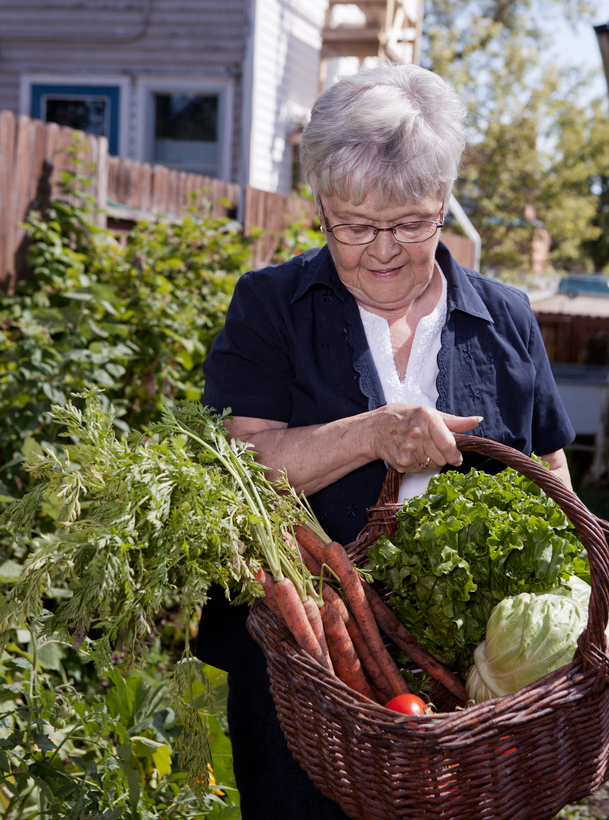A growing number of at-risk seniors use food banks to supplement their own pantry when funds run low but what many community cupboards lack is a regular supply of fresh fruits and vegetables. That’s where the idea of a edible garden, tended by low-income clients, comes to the rescue. Not only do raised bed gardens yield a healthy harvest, project like the one at The Open Door food pantry in Gloucester, Massachusetts, give seniors a reason to get out of the house and develop friendships while caring for a patch of garden together.
Seniors represent more than half of all clients visiting food pantries in the United States, according to a 2010 study by Feeding America, a non-profit dedicated to ending hunger in America. Seniors not only face mobility challenges making shopping difficult, many have numerous health issues that often force them to choose between buying their medication and eating. Seven million seniors over the age of 60 are served each year by food banks.
Many seniors grew up helping to tend large kitchen gardens that were an essential part of everyday life and the next generation could probably learn a trick or two about growing food from their parents and grandparents. Working a plot of earth, no matter how small, can often bring back fond memories for older adults of their own youth and in doing so forge a bond with other gardeners of all ages.
With the farm-to-table movement catching on across the United States and Canada, more people are interested in how to supply healthy, local fresh food to those who need it most. Food pantry gardening has been the answer for many communities offering not only a rich harvest of fresh produce but an opportunity to bring many generations together in a common goal.
To learn more about food pantry gardens visit http://www.foodpantrygardens.org or for information about donating surplus produce visit http://ampleharvest.org/ .






Add Your Voice
0 Comments
Join the Discussion